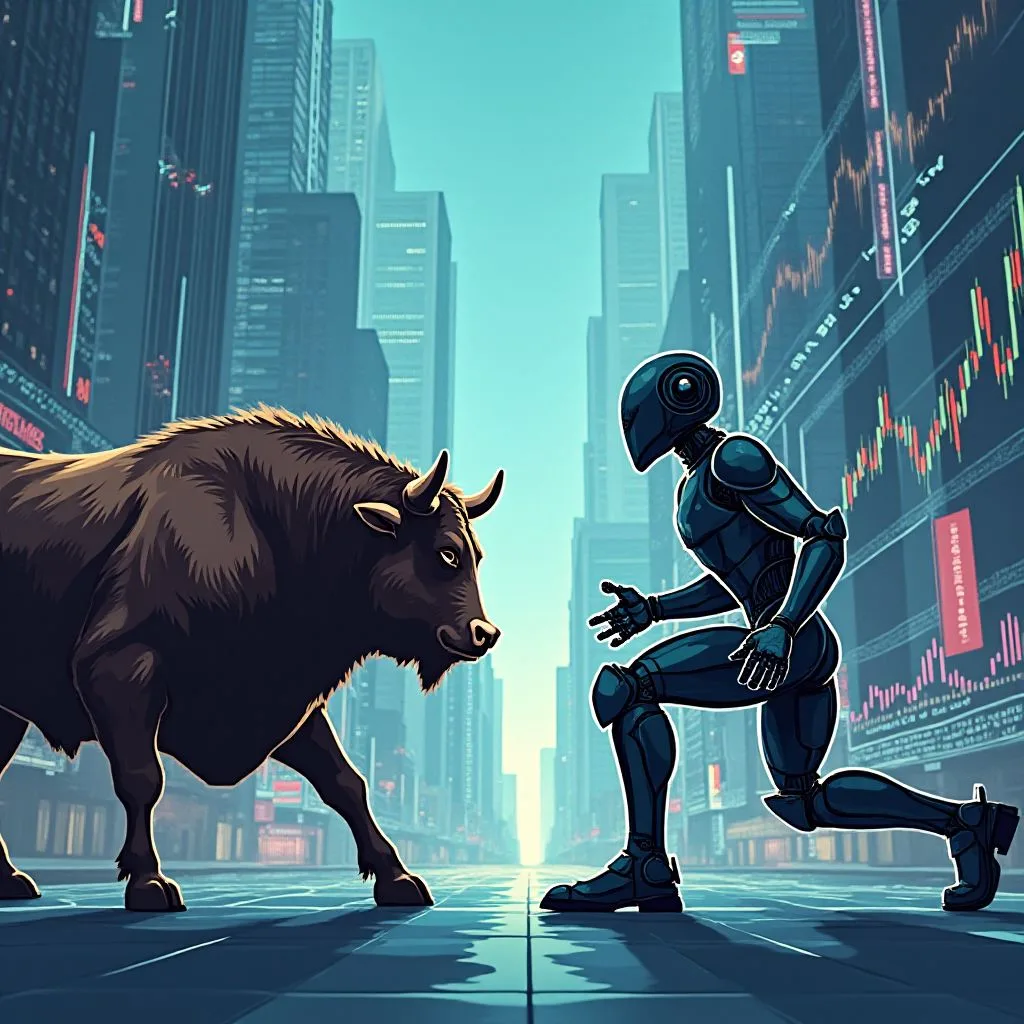Ever tried predicting the stock market? It’s like trying to guess your cat’s next move—totally random and slightly terrifying. Welcome to The Awesome Blog, where today we’re diving deep into how Artificial Intelligence (AI) and Machine Learning (ML) might just make forecasting the Dow Jones Industrial Average (DJIA) less mysterious and more profitable. Ready to geek out?
Dow Jones: Roller Coaster or Rocket Ship?
The DJIA is like that unpredictable friend who decides to travel to Argentina for no reason. Factors like inflation, GDP reports, and even someone’s Twitter meltdown (looking at you, CEOs) heavily influence it. Even tiny financial reports can send the entire market into an existential crisis!
AI to the Rescue…Maybe?
Enter AI algorithms—like superheroes, but instead of capes, they wear data. AI doesn’t binge-watch Netflix; it binge-scan data, analyzing economic releases, earnings reports, and even sentiment from your Aunt Marge’s pessimistic Facebook rant.
- Time Series Analysis: Like looking at your history of embarrassing texts to avoid future awkwardness.
- Sentiment Analysis: Assessing tweets and headlines to gauge market moods—think of AI as a mood ring, but accurate.
- Regression Models: Predicting future trends based on current economic conditions and past performances—minus the buzzkill professor vibe.
Diving into AI’s Financial Toolkit
Financial institutions aren’t fooling around; they’re employing sophisticated tech like LSTM neural networks (AI’s way of remembering stuff better than your partner remembers anniversaries) and Transformers (no Autobots here, but still pretty cool tech using “attention mechanisms” to interpret data).
Cool Uses of AI in Finance
- Algorithmic Trading: Robots trading faster than you can say “buy low, sell high.”
- Risk Management: Spotting financial trouble before it trashes your portfolio.
- Portfolio Optimization: Helping your investment decisions look less like wild guesses and more like neatly organized sock drawers.
Oops Moments: AI Isn’t Perfect
As brilliant as AI might seem, it’s not invincible. Crazy market volatility or sketchy data quality can leave even the smartest algorithms looking lost, like a GPS in a tunnel. And watch out—the dreaded “overfitting” can make AI too obsessed with past trends, failing miserably with future reality checks.
Metrics Beyond Mere Accuracy—What Really Matters
- Sharpe Ratio: Because “risk-adjusted returns” sounds fancy and smart at parties.
- Maximum Drawdown: How low can you go without crying?
- Trading Frequency & Transaction Costs: Sometimes trading less might mean profiting more.
Must-Try Tools for AI Enthusiasts
Feeling nerdy? Try these open-source tools and datasets to jumpstart your AI-driven market predictions:
- Python libraries: Pandas, NumPy, Scikit-learn, Tensorflow, PyTorch—you name it!
- Data sources: Yahoo Finance, Quandl, Alpha Vantage—enough datasets to train an AI that’ll outsmart your investment banker cousin.
Regulations Galore: AI’s Legal Drama
It’s not all fun and games in the AI finance world. Between the SEC, GDPR, and EU AI Acts, using AI can feel like navigating through legal landmines blindfolded. Always stay aware—or risk seeing your brilliant AI project become courtroom entertainment.
Sentiment Analysis: Reading Between the Tweets
Your tweets might now influence AI stock predictions more than you realize. AI systems analyze news and social media sentiment to predict trends. Yes, your “OMG market crash coming!!” tweet might just tip an algorithm off.
Key Takeaways
- AI offers significant promise in stock market prediction but also faces limitations and complexities.
- Accuracy alone isn’t enough—real-world performance metrics like profitability and Sharpe Ratio matter big-time.
- The tech-savvy investor today has open-source tools and datasets readily accessible for experimenting.
- Stay compliant! Regulatory challenges must be carefully managed.
- Sentiment analysis is crucial—a tweet might just be your best trading signal.
As we wrap up today’s adventure into AI and the Dow Jones, remember: Even sophisticated AI can’t completely tame the wild beast that is the stock market. But for those daring enough to dive into the numbers and algorithms, the potential is enormous—and perhaps wildly profitable. Keep nerding out with us at The Awesome Blog!

Leave a Reply